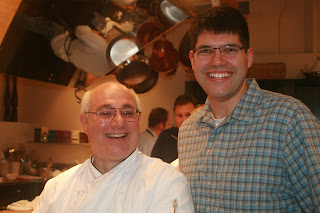 I substituted pecans for the walnuts because (a) I prefer pecans to walnuts and (b) I didn't have any walnuts on hand. In addition, I increased the quantity of ingredients by one-third so I would get 2 lb loaves instead of 1.5 lb loaves and that worked well. I don't think it's strictly necessary to rinse the raisins and I think next time I would skip that step. Peter writes that the wild yeast on the skin of the raisins can affect the dough but I've read elsewhere that its effect is negligible.
I substituted pecans for the walnuts because (a) I prefer pecans to walnuts and (b) I didn't have any walnuts on hand. In addition, I increased the quantity of ingredients by one-third so I would get 2 lb loaves instead of 1.5 lb loaves and that worked well. I don't think it's strictly necessary to rinse the raisins and I think next time I would skip that step. Peter writes that the wild yeast on the skin of the raisins can affect the dough but I've read elsewhere that its effect is negligible.It proved a little uncomfortable to incorporate the chopped pecans in the last couple minutes of kneading by hand. It's a lot like rubbing your hands with 16-grit sand paper. However the nuts provided great contrast to the soft, enriched texture of the bread and were worth it.
The children had already gone to bed by the time I sliced the bread but I promised them they could have a slice of it as toast in the morning with their breakfast. This recipe is a keeper.









